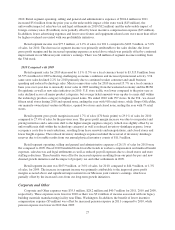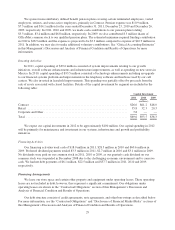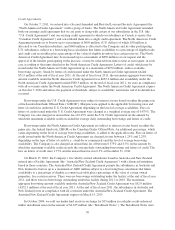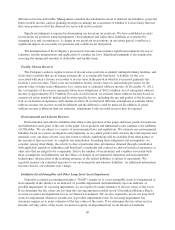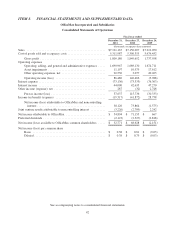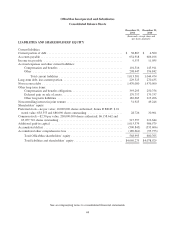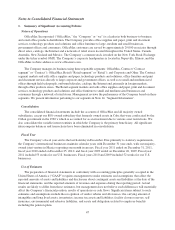OfficeMax 2011 Annual Report Download - page 69
Download and view the complete annual report
Please find page 69 of the 2011 OfficeMax annual report below. You can navigate through the pages in the report by either clicking on the pages listed below, or by using the keyword search tool below to find specific information within the annual report.Asset Impairments
We are required for accounting purposes to assess the carrying value of other intangible assets annually or
whenever circumstances indicate that a decline in value may have occurred. No impairment was recorded related
to other intangible assets in 2011, 2010 or 2009.
For other long lived assets, we are also required to assess the carrying value when circumstances indicate
that a decline in value may have occurred. Based on the operating performance of certain of our Retail stores due
to the macroeconomic factors and market specific change in expected demographics, we determined that there
were indicators of potential impairment relating to our Retail stores in 2011, 2010 and 2009. Therefore, we
performed the required impairment tests and recorded non-cash charges of $11.2, $11.0 and $17.6 million,
respectively, to impair long-lived assets pertaining to certain Retail stores.
Facility Closure Reserves
We conduct regular reviews of our real estate portfolio to identify underperforming facilities, and close
those facilities that are no longer strategically or economically beneficial. We record a liability for the cost
associated with a facility closure at its estimated fair value in the period in which the liability is incurred,
primarily the location’s cease-use date. Upon closure, unrecoverable costs are included in facility closure
reserves and include provisions for the present value of future lease obligations, less contractual or estimated
sublease income. Accretion expense is recognized over the life of the payments.
During 2011 we recorded charges of $5.6 million in our Retail segment related to the closing of six
underperforming domestic stores prior to the end of their lease term, of which $5.4 million was related to the
lease liability and $0.2 million was related to asset impairments. In 2010, we recorded charges of $13.1 million in
our Retail segment related to facility closures, of which $11.7 million was related to the lease liability and other
costs associated with closing eight domestic stores prior to the end of their lease terms, and $1.4 million was
related to other items. In 2009, we recorded charges of $31.2 million related to the closing of 21 underperforming
stores prior to the end of their lease terms, of which 16 were in the U.S. and five were in Mexico.
At December 31, 2011, the facility closure reserve was $49.1 million with $10.6 million included in current
liabilities, and $38.5 million included in long-term liabilities. The vast majority of the reserve represents future
lease obligations of $102.0 million, net of anticipated sublease income of approximately $52.9 million. Cash
payments relating to the facility closures were $22.3 million in both 2011 and 2010 and $24.6 million in 2009.
We anticipate future annual payments to be similar in amount.
In addition, we were the lessee of a legacy, building materials manufacturing facility near Elma,
Washington until the end of 2010. During 2006, we ceased operations at the facility, fully impaired the assets and
recorded a reserve, which is separate from the facility closure reserve above, for the related lease payments and
other contract termination and closure costs. During 2010, we sold the facility’s equipment and terminated the
lease. As a result, we recorded pre-tax income of approximately $9.4 million to adjust the associated reserve.
This income is reported in other operating expense, net in our Consolidated Statements of Operations.
Environmental
As an owner and operator of real estate, we may be liable under environmental laws for the cleanup of past
and present spills and releases of hazardous or toxic substances on or from our properties and operations. We can
be found liable under these laws if we knew of, or were responsible for, the presence of such substances. In some
cases, this liability may exceed the value of the property itself.
Environmental liabilities that relate to the operation of the paper and forest products businesses and
timberland assets prior to the closing of the sale of our paper, forest products and timberland assets in 2004
continue to be our liabilities. We have been notified that we are a “potentially responsible party” under the
37


